- Home
- Ray Bradbury
Bradbury Speaks
Bradbury Speaks Read online
BRADBURY SPEAKS
Too Soon from the Cave, Too Far from the Stars
RAY BRADBURY
DEDICATION
With love to my friends Loren Eiseley and Aldous Huxley, whose essays showed me the way
CONTENTS
Dedication
Introduction
About Writing
My Demon, Not Afraid of Happiness (undated)
Vin Revivere, or a Vintage Revisited (1991)
How Something Wicked Came (1996)
Lincoln’s Doctor’s Dog’s Butterfly (undated)
The Whale, The Whim, and I (undated)
All’s Well That Ends Well … or, Unhappily Ever After (2003)
Remembrance of Books Past (2004)
About Science Fiction
Predicting the Past, Remembering the Future (2001)
Mars: Too Soon from the Cave, Too Far from the Stars (2000)
Earthrise and Its Faces (1999)
Falling Upward, or Walking Backward to the Future (1999)
Beyond Giverny (1994)
About People
Mouser (undated)
Lord Russell and the Pipsqueak (undated)
More, Much More, by Corwin (1999)
Because of the Wonderful Things He Does (1999)
A Milestone at Milestone’s: Bonderchuk Remembered (undated)
Free Pass at Heaven’s Gate (1999)
GBS: Refurbishing The Tin Woodman: Science Fiction With A Heart, a Brain, and the Nerve! (1997)
About Life
The Beautiful Bad Weather (2000)
The Affluence of Despair: America Through the Looking Glass (1998)
The Hunchback, the Phantom, the Mummy, and Me (undated)
Any Friend of Trains is a Friend of Mine (1968)
I’m Mad as Hell, and I’m not Going to Take it Anymore! (The New Millennium, That is) (undated)
The Rabbit Hole Lost and Found Book Shoppe (undated)
Beyond 1984 (1979)
The Ardent Blasphemers (1962)
That Future with a Funny Name (1995)
Hysteria, Goddess of Flight, or on Takeoff, do not Run Up and Down the Aisles Screaming (1993)
Time to Explore Again: Where is the Madman Who’ll Take us to Mars? (2004)
About Paris
Paris: Always Destroyed, Always Triumphant (1986)
The Sixty-Minute Louvre: Paris by Stopwatch (1993)
About Los Angeles
Queen of Angels, Not Quite Ready for Her Close-Up (undated)
L.A., How Do I Love Thee? (undated)
L.A., Outta the Way and Let us Happen! (2000)
L.A., We are the World!: A New-Millennium Revelation (1989)
Disneyland, or Disney’s Demon for Happiness (undated)
Essay Sources
About the Author
Praise for Ray Bradbury & Bradbury Speaks
Also by Ray Bradbury
Copyright
About the Publisher
INTRODUCTION
Although I suppose I am best known to readers as a fiction writer, I am also a great lover of the essay and have written hundreds of them. Everyone has heard of the “familiar essay,” in which the writer draws on personal life experience, ideas, and the world around him. But few know the term “unfamiliar essay,” where a god-awful amount of research has to be sweated through. All of the pieces in this book are familiar essays. I’ve written only one unfamiliar piece; although it is not included here, my experience with it is worth noting.
Some years back, Life magazine asked me to write about life on other worlds. In the course of my research, I collected hundreds of pages and dozens of tapes, all of which I dutifully studied, all of which drove me mad with details. I digested all these facts and tried to spit them out again in a piece called “Life on Other Worlds,” which I duly mailed off to the magazine.
Deeply displeased with my article, Life flew an editor to Los Angeles with scissors and paste to tear my article apart and put it back together. It was ultimately published, but it was dreadful—unfamiliar—work, and as a result is the least favorite of all the essays I’ve ever written.
All of my other essays were born of explosions of love and quiet passion.
For instance, at lunch with a number of Life editors some thirty years ago, I expressed my wild enthusiasm for trains.
“My God,” they said. “Why don’t you write an article on trains for us?”
“Wait here!” I cried, and ran across the street to my office, where I wrote the piece in a white-hot burst of love and returned to the luncheon table in thirty minutes. I sold the article during dessert.
If you read “Any Friend of Trains Is a Friend of Mine,” you can feel the difference between research that one commits in agony and the research of memory and love, which is the finest and the best.
The most successful of my declamatory essays is “The Ardent Blasphemers,” where I compare Melville’s mad Captain Ahab with Jules Verne’s saner Captain Nemo, viewing the dark of one as against the light of the other. My essay shows Ahab daring God to strike him, whereas Nemo plugs into the energy of the universe and ignites the seas.
Two years after this essay was published, two strangers knocked at my door, representing the United States Pavilion to be built for the 1964 New York World’s Fair.
“We’ve come,” they said, “to give you a fifty-million-dollar building.”
“Come in, come in!” I cried. “What’s this?”
“We’ve read your essay ‘The Ardent Blasphemers,’ ” they said, “describing the gap between crazed Ahab and the mild lunatic Nemo, and their creative blasphemy. It has convinced us that you are the proper one to plan the American Adventure in the United States Pavilion. Can you write a sixteen-minute-long script, accompanied by a full symphony orchestra?”
“I can!” I cried, and did.
So by committing myself to the passionately dramatic, by jumping in headlong and not agonizing over research, my life was changed yet again.
Since then, I’ve written essays only when they wake me at dawn and ask to be finished by noon.
Thirty-seven of those insistent, wake-me-at-dawn friends are included here. I had great fun poking through my files, pulling these essays out, dusting them off, re-meeting them. Some have been published; I have provided original publication dates for those. The others were written at various times over the years and, I’m afraid, I cannot remember their birthdays, and so they’ve been annotated as “undated.” In some of these undated essays, one can find hints as to the approximate time period in which they were probably written. For example, “I’m Mad As Hell, and I’m Not Going to Take It Anymore!” is undated, but I must have written it in 1999, given the content of the piece. (On another note, it’s interesting to observe that in this essay, I refer to the videocassette as a “newborn vaudevillian.” Of course, if I wrote the essay today, I would probably refer to the DVD, which was introduced in the late 1990s, and not yet as ubiquitous as it is today.)
“Lord Russell and the Pipsqueak” is a panicked remembrance of my visiting Bertrand Russell and wondering just what in hell I could possibly say to the world’s greatest philosopher. Somehow I managed.
“The Affluence of Despair: America Through the Looking Glass” and “Beyond 1984” are rooted in my short story “The Toynbee Convector.” Surrounded for years by people who arose each morning on the dark side of their beds, I knew they looked upon me as a fool; I knew otherwise and wrote these two essays because I figured we—our country—would succeed far beyond our wildest dreams and ultimately solve most of our problems if only we kept looking forward, with hope. If you read these essays along with my piece on writing, “My Demon, Not Afraid of Happiness,” you will find my soul’s blueprint.
Another of my life’s loves is France, particularly Paris, City of Light. On my way to Rome fifty years ago, my friend Lord Kilbracken urged me to have dinner in Paris, even though I had only ninety minutes between trains. I obeyed, had dinner, and almost missed my train connection south. From this came “The Sixty-Minute Louvre: Paris by Stopwatch.”
“Paris: Always Destroyed, Always Triumphant” concerns the revolutionary history of France compared to the reality of the most beautiful country and the most beautiful city in the world. The ironic difference between the real aesthetic and beautiful France and its political failures during two hundred years is amazing; I could not but write about it.
And, of course, I love my home city of Los Angeles. “L.A., How Do I Love Thee?” and “L.A., Outta the Way and Let Us Happen!” were written because so much of the rest of the country, particularly New York City, has beaten up on us over the years. The great thing about L.A., as indicated in the essays, is that there you have the freedom and opportunity and resources to find your way to become anyone you want. You don’t have to assume the attitudes or opinions of the rest of the country. There you find the delicious freedom, especially, to become the kind of writer you want to become.
“Mars: Too Soon from the Cave, Too Far from the Stars” positions us exactly where I think we are at this time in history. We have much to forgive ourselves for, and it all must be forgiven if we are to move forward. Those of us living now are, in my opinion anyway, the in-between generation. It’s been only a few thousand years since we emerged from our caves. We have to be patient with ourselves as we move on in our return to the Moon and onward to Mars. I think this is inevitable; it will happen, and we must not let our prejudices stand in our way.
On that final note, dear readers, I leave these familiar essays in your gentle hands.
ABOUT WRITING
MY DEMON, NOT AFRAID OF HAPPINESS (UNDATED)
I have a strange and incredible muse that, unseen, has engulfed me during my lifetime. I have renamed my muse. In a Frederick Seidel poem, I found a perfect replacement, where he tells of “A Demon not afraid of happiness.”
This perfectly describes the Demon that sits now on one shoulder, now on the other, and whispers things that no one else hears.
My Demon warned me one night years ago when I saw some glum theater at UCLA. Later I said to the director, “You want me to stick my wet finger in a wall socket for electrocution. Instead I will screw a brighter bulb in the same socket and light the room.”
So my Demon warned me off such encounters and provided invisible material for my future life.
Dandelion Wine, for example, began as an essay in Gourmet magazine in 1953, and over the years my Demon tripped me, sprawling, into a novel to be read in American schools.
On my twenty-fourth birthday, I discovered Winesburg, Ohio, which is indeed not a novel but a short-story collection by Sherwood Anderson. How fine, I thought, if someday I could birth similar grotesques to inhabit Mars.
My Demon, provoked, secretly made travel plans to landfall Mars, live there, and arrive at an unplanned novel, The Martian Chronicles.
Green Shadows, White Whale resulted from my life in Ireland, when for eight months I wrote the screenplay of Moby Dick for John Huston. At the time I thought I was not sponging in any of the green atmosphere or the characters of sad and beautiful Ireland. But then one night, a year later, a voice spoke in my head and said, “Ray, darlin’.” And I said, “Who’s that?” The voice said, “It’s Nick, your cabdriver. Remember all those nights of my driving you back from Kilcock to Dublin and describing the mist and the fog and the rain along the way? Do you remember that, Ray?” “Yes,” I said. Then the voice said with the voice of my Demon, “Would you get up and put that down?” I got up, surprised, and went to my typewriter and began to write a series of poems, essays, and one-act plays that finally shared a San Francisco theater with Sean O’Casey.
Twenty years passed with more essays, poems, and stories, and I woke one morn to find in that litter Green Shadows, White Whale, a novel, complete and intact.
A short tale, “The Black Ferris,” melded itself into a screenplay for Gene Kelly, and when Kelly couldn’t find the money for the film, I spent three years turning the screenplay into the novel Something Wicked This Way Comes.
Then at last there is my late-on offspring From the Dust Returned, commenced when I drew skeletons, age six, to scare my cousins, continued in secret when I helped redecorate my grandparents’ house with Halloween broomsticks, and ended with a gothic story, “Homecoming,” rejected by Weird Tales as needful of Marley’s ghost and lacking Poe. I sold the story to Mademoiselle, and over the years it grew in rain and mist and arrived in fogs as a novel just last year.
What we have here, then, is a very unusual approach to writing and discovering, not knowing the outcome. To move ahead on a blind journey, running fast, putting down thoughts as they occur.
And along the way my inner voice advised:
If you must write of assassinations, rapes, and Ophelia suicides, speak the speech, I pray thee, poetry in your breath, metaphors on your tongue. Remember how glad Iago was to think on Othello’s fall. How, with smiles, Hamlet prepared his uncle’s death.
Shakespeare and my Demon schooled me so: Be not afraid of happiness. It is often the soul of murder.
VIN REVIVERE, OR A VINTAGE REVISITED (1991)
Little did I know, as the old saying goes, that when publishing my “Dandelion Wine” story in Gourmet in 1953, I was starting a novel.
The history of my books is most strange. My stories, essays, and poems suddenly grow full and tall.
The Martian Chronicles, for example, born in 1944 as a collection of stories, along the way civilized an entire planet.
Similarly Green Shadows, White Whale. My life in Ireland, written as poems and plays, finally became a novel about John Huston and Moby Dick.
“Dandelion Wine,” then, was a series of word associations about my hometown, remembering how it was to run in a new pair of tennis shoes or to perch on the family porch on those wonderful summer nights when we filled the sky with rockets and fire balloons.
The novel was published in 1957. Since then I’ve been astounded to receive letters from Sweden, where summer lasts perhaps three or four days, or Kenya, where summer lasts forever. Then Tokyo. Where is there room for grass anywhere in Tokyo? How in hell could they grow dandelions to make wine?
But every Christmas for twenty years, forty Japanese students air-mail me essays, poems, and novel fragments about Dandelion Wine as a special gift to end the year. Their exquisite writing cracks my heart. How peculiar that my grandfather’s cellar pressings would be a proper vintage for those Orient students halfway round the world.
Along the way the book has shifted locales and costumed itself in stage plays and musicals. Three different composers have written music for the productions that have appeared in Chicago, Washington, D.C., and Los Angeles.
In my pantry at this moment sit nine bottles of dandelion wine, arrived from every continent. The bottle I treasure most was made from flowers on my grandparents’ lawn, next door to the house where I was born in upper Illinois.
Last summer, in Minneapolis, I was astounded by a vast ocean of dandelions brimming the entire city. No lawn existed that had fewer than a thousand flowers. I was overwhelmed because in California, as soon as we see one flower in the middle of the yard, we run out and stomp it.
Next year I will send my Dandelion Wine play to Minneapolis, and I will go there for the re-premier and run out on one of those lawns, surrounded by ten thousand dandelions, and fall to roll like a happy dog.
HOW SOMETHIN
G WICKED CAME (1996)
If Gene Kelly hadn’t danced, Something Wicked This Way Comes might never have been written. In fact, it is an absolute certainty my carnival would not have come alive to travel and arrive at 3:00 A.M., the soul’s midnight.
The details of creation are such that, looking back, one experiences apprehension. Gene Kelly invited me and my wife, Maggie, to a private screening of his all-dance musical Invitation to the Dance. If I had refused the invitation, again, this book would have been stillborn. Fortunately, Maggie and I attended the screening and walked home from MGM that night filled with admiration.
On the way I confessed I would almost tear off my right arm to work for Gene Kelly.
“Do it,” Maggie said. “Go through your files, look at all those stories you’ve put away, find something that might fit, do a screen treatment, and send it to Gene.”
“Just like that?” I said.
“Just like that,” said Maggie.
One episode in Gene Kelly’s Invitation to the Dance had to do with a carnival/circus, with overtones of Laugh, Clown, Laugh, Lon Chaney’s tragic 1926 film.
Rifling my file of some thirty published and unpublished stories, I found variations on carnival and circus themes, most of them put away when I was twenty-six years old, one published in a pulp magazine when I was thirty, “The Black Ferris.”
The story told of a strange carnival that operated a Ferris wheel that aged people younger or older, depending on which direction the wheel turned, backward or forward. Two boys, discovering the secret of the wheel, are almost destroyed by the carnival owner, who, in turn, trapped on the wheel, is aged around and around, until he dies, an ancient mummy.
Just like that, as Maggie said.
In five weeks I wrote Dark Carnival, a seventy-page outline/treatment, and gave it to Gene Kelly.
He called the next day, wild with enthusiasm.
“Do I have your permission to take this to Paris and London and try and find funding for a possible film?” he said.

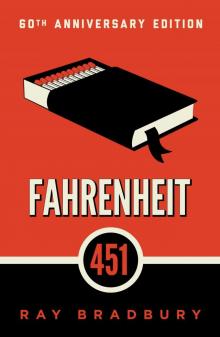 Fahrenheit 451
Fahrenheit 451 Zen in the Art of Writing
Zen in the Art of Writing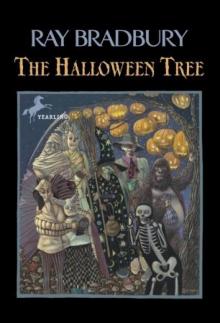 The Halloween Tree
The Halloween Tree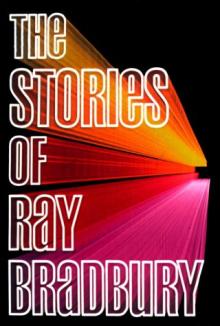 The Stories of Ray Bradbury
The Stories of Ray Bradbury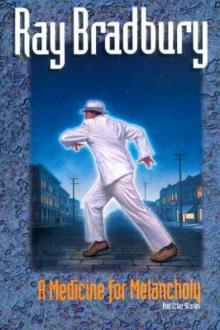 A Medicine for Melancholy and Other Stories
A Medicine for Melancholy and Other Stories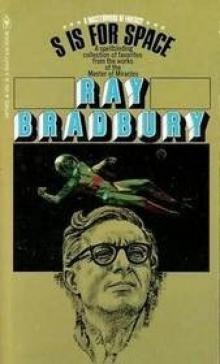 S Is for Space
S Is for Space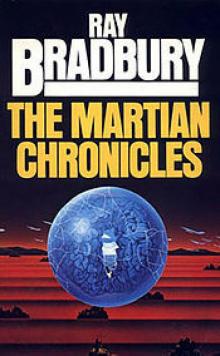 The Martian Chronicles
The Martian Chronicles Futuria Fantasia, Winter 1940
Futuria Fantasia, Winter 1940 Farewell Summer
Farewell Summer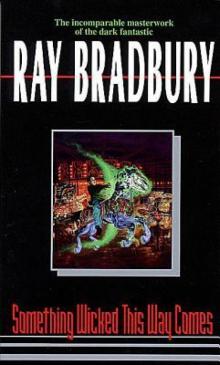 Something Wicked This Way Comes
Something Wicked This Way Comes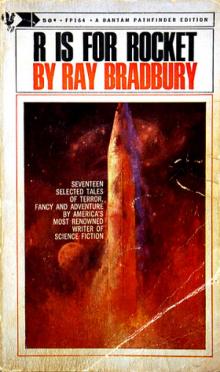 R Is for Rocket
R Is for Rocket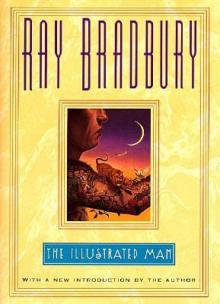 The Illustrated Man
The Illustrated Man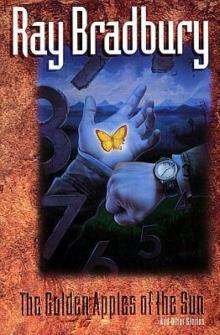 The Golden Apples of the Sun
The Golden Apples of the Sun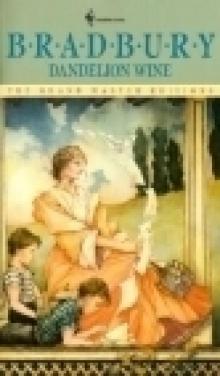 Dandelion Wine
Dandelion Wine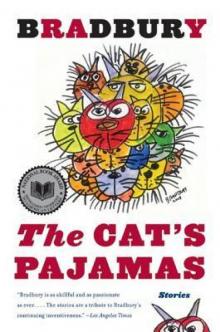 The Cat's Pajamas
The Cat's Pajamas A Graveyard for Lunatics
A Graveyard for Lunatics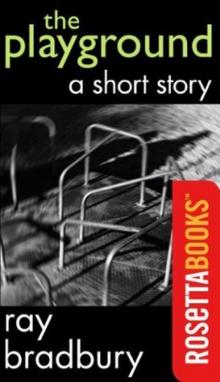 The Playground
The Playground We'll Always Have Paris: Stories
We'll Always Have Paris: Stories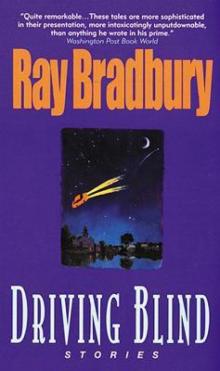 Driving Blind
Driving Blind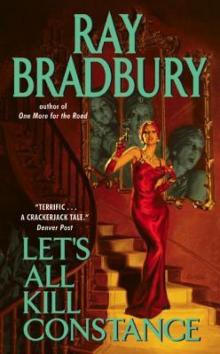 Let's All Kill Constance
Let's All Kill Constance The Day It Rained Forever
The Day It Rained Forever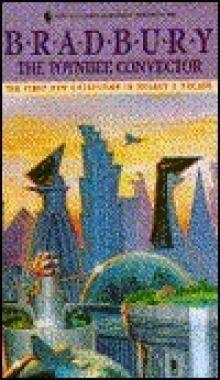 The Toynbee Convector
The Toynbee Convector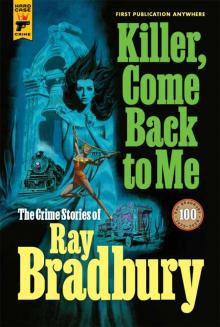 Killer, Come Back to Me
Killer, Come Back to Me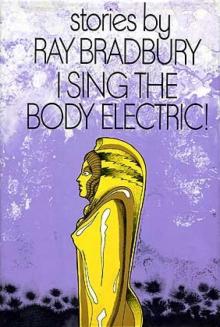 I Sing the Body Electric
I Sing the Body Electric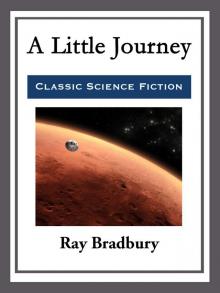 A Little Journey
A Little Journey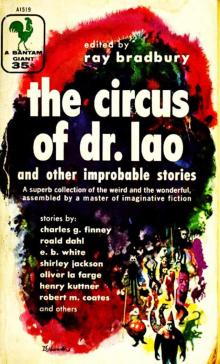 The Circus of Dr Lao and Other Improbable Stories
The Circus of Dr Lao and Other Improbable Stories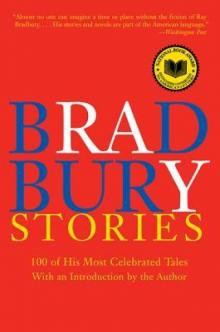 Bradbury Stories: 100 of His Most Celebrated Tales
Bradbury Stories: 100 of His Most Celebrated Tales From the Dust Returned
From the Dust Returned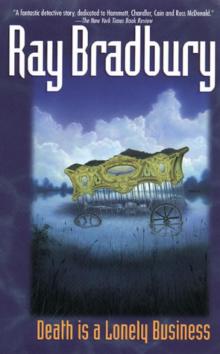 Death Is a Lonely Business
Death Is a Lonely Business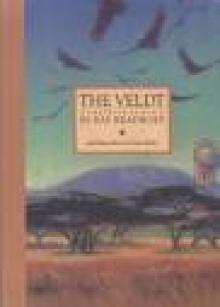 THE VELDT
THE VELDT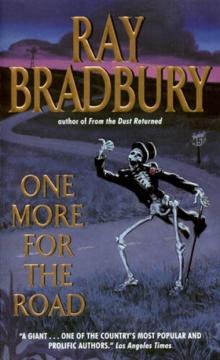 One More for the Road
One More for the Road Futuria Fantasia, Summer 1939
Futuria Fantasia, Summer 1939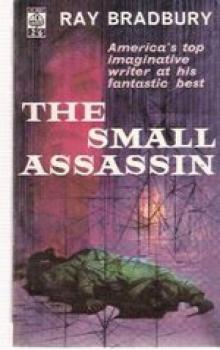 The Small Assassin
The Small Assassin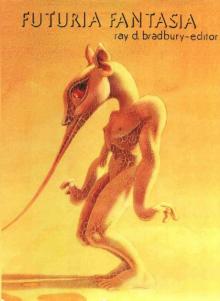 Futuria Fantasia, Fall 1939
Futuria Fantasia, Fall 1939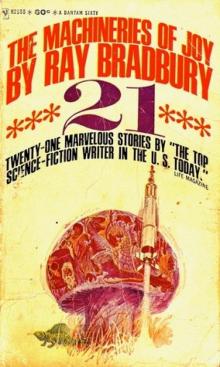 Machineries of Joy
Machineries of Joy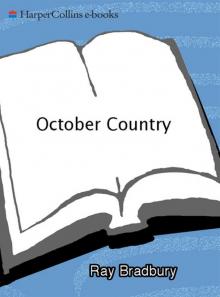 The October Country
The October Country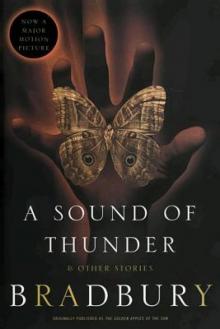 A Sound of Thunder and Other Stories
A Sound of Thunder and Other Stories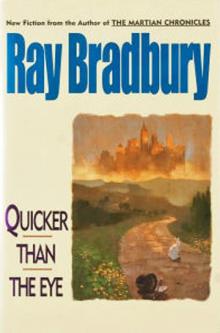 Quicker Than the Eye
Quicker Than the Eye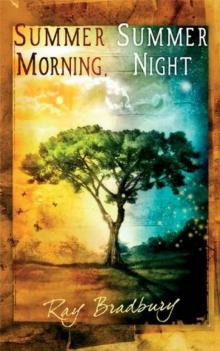 Summer Morning, Summer Night
Summer Morning, Summer Night Yestermorrow
Yestermorrow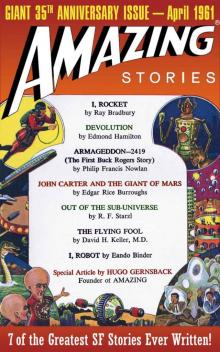 Amazing Stories: Giant 35th Anniversary Issue (Amazing Stories Classics)
Amazing Stories: Giant 35th Anniversary Issue (Amazing Stories Classics)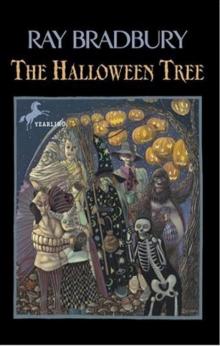 (1972) The Halloween Tree
(1972) The Halloween Tree Listen to the Echoes
Listen to the Echoes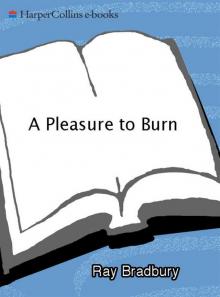 A Pleasure to Burn
A Pleasure to Burn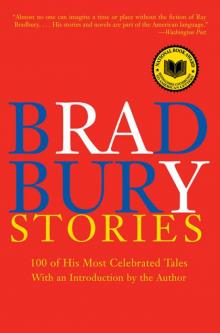 Bradbury Stories
Bradbury Stories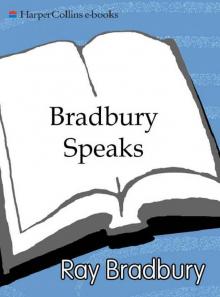 Bradbury Speaks
Bradbury Speaks Ray Bradbury Stories Volume 2
Ray Bradbury Stories Volume 2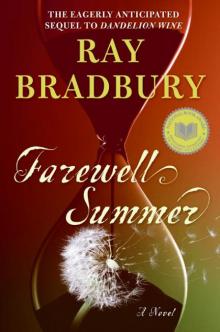 Farewell Summer gt-2
Farewell Summer gt-2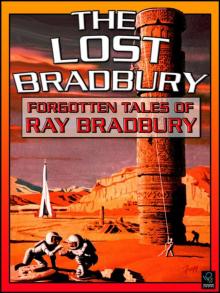 The Lost Bradbury
The Lost Bradbury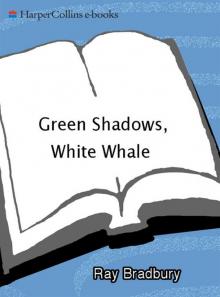 Green Shadows, White Whale
Green Shadows, White Whale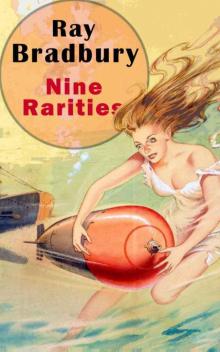 Nine Rarities
Nine Rarities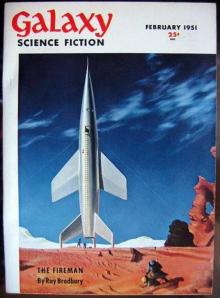 The Fireman
The Fireman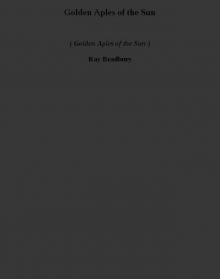 Golden Aples of the Sun (golden aples of the sun)
Golden Aples of the Sun (golden aples of the sun)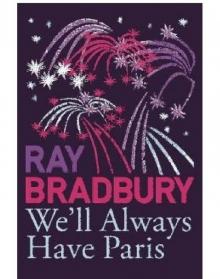 We'll Always Have Paris
We'll Always Have Paris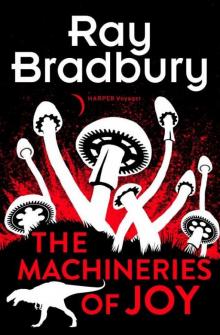 The Machineries of Joy
The Machineries of Joy A Graveyard for Lunatics cm-2
A Graveyard for Lunatics cm-2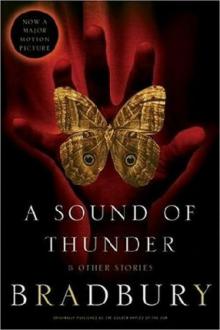 The Sound of Thunder
The Sound of Thunder Where Robot Mice and Robot Men Run Round In Robot Towns
Where Robot Mice and Robot Men Run Round In Robot Towns